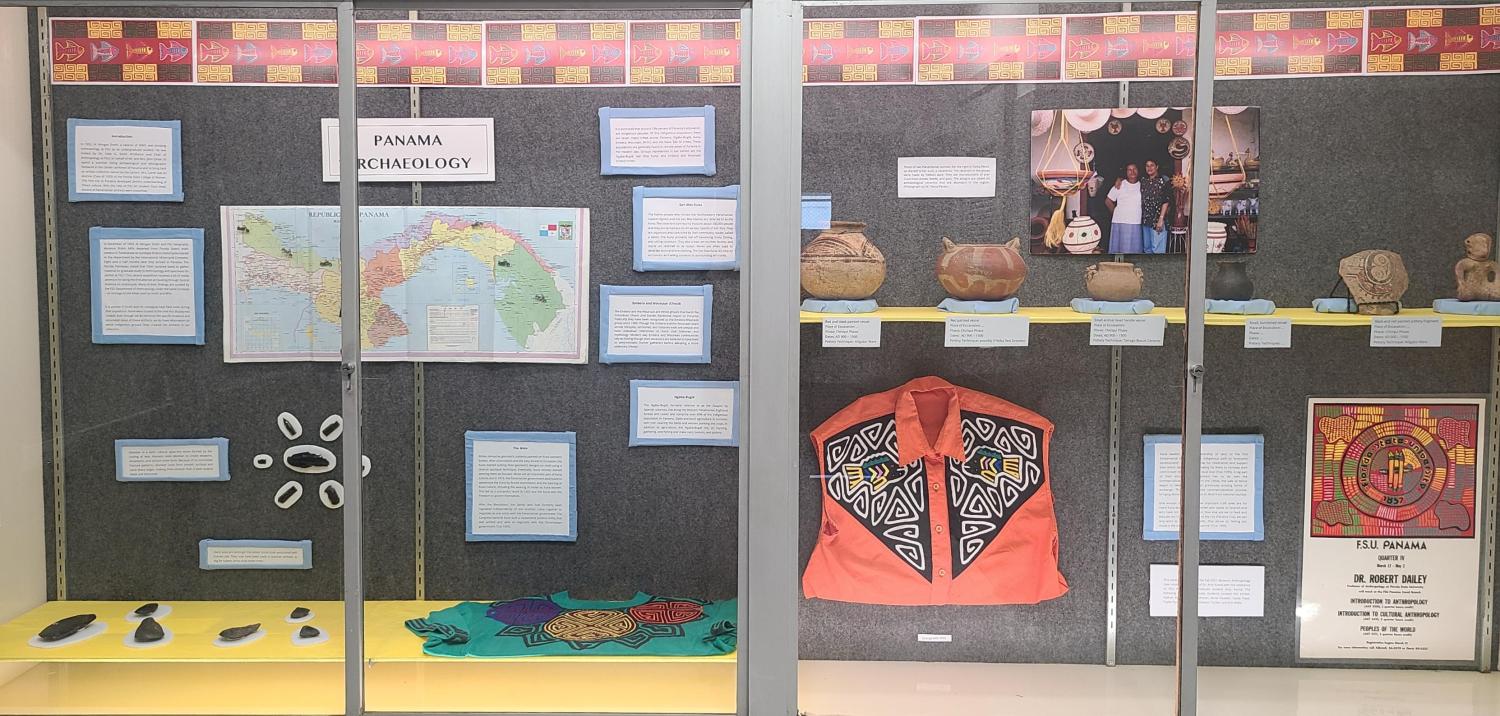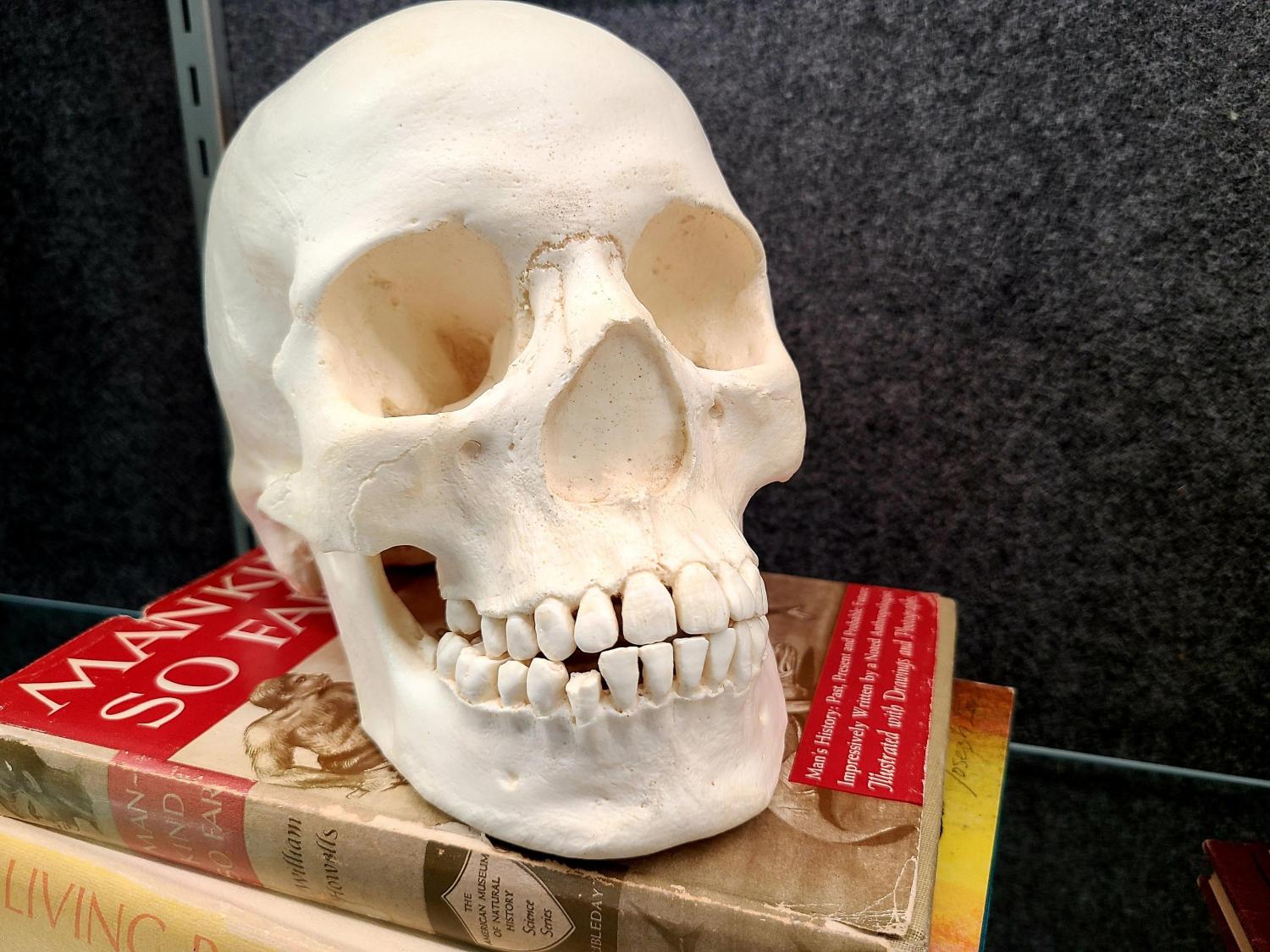Museums serve as active centers of our communities as sites of social and historical production in diverse cultural and national settings. Through the Museum Anthropology course, museum fundamentals are introduced including missions and goals, exhibition planning and design, curation and conservation, and funding and development. Particular attention is directed toward engagement with communities, interpretation of cultural heritage, and the decolonization and reinterpretation of the narratives presented. This course is a process of active student engagement in how to integrate anthropological approaches and our responsibilities to the public through museum practices. Students in this course create museum exhibits using research and associated artifacts of professors within the FSU Anthropology Department. The students aptly demonstrate the anthropological practices and responsibilities learned in the course in designing and constructing the exhibits. Currently being displayed in the Carraway Building on the first and second floors, the student exhibits are ready to be viewed and appreciated by fellow Florida State University students, faculty and staff.
For more information, please contact Dr, Amy Kowal (akowal@fsu.edu) or visit her webpage.
This website was designed by FSU Anthropology graduate student Natalie Kinni under the direction of Dr. Amy Kowal.

Peopling of the Americas Exhibit
This exhibit examines the evidence for three major hypotheses of how the First Peoples inhabited the American continents advanced by archaeologists over the previous century: the Northwest Pacific Coast Hypothesis, the Ice-free Corridor Hypothesis, and the Solutrean Hypothesis. Since the Last Glacial Maximum 23,000 years ago, sea levels rose impacting past human migrations onto and across the North American landscape. When and how people arrived in the Americas is still a point of contention in pre-Contact archaeology. However, understanding sea level variations, migration paths of animals, and vegetation available on the continent, enables archaeologists to conduct more in-depth studies of early peoples' travels. These along with new advances in DNA research, a better understanding of regional geology, and paleoclimate studies have enabled archaeologists to better interpret early settlement patterns. Through the analysis of stone tools and the radiocarbon dating of faunal fossils, researchers have found that the populations of early humans lived successfully in the Americas approximately 13,500 to 16,000 years ago. Additionally, new archaeological discoveries have pushed this date range back even further to approximately 23,000 years ago.

Panama Archaeology Exhibit
In 1952, H. Morgan Smith, a veteran of WWII, was studying Anthropology at FSU as an undergraduate student. He was invited by Dr. Hale G. Smith (Professor and Chair of Anthropology at FSU) on behalf of Mr. and Mrs. John Carter to spend a summer doing archaeological and ethnographic fieldwork in the Darién rainforest of Panama and to bring back an artifact collection owned by the Carters. Mrs. Carter was an alumna (Class of 1935) of the Florida State College of Women. This first trip to Panama developed Smith’s understanding of Chocó culture. With the help of fellow FSU student Tiazo Miaki, dozens of Panamanian artifacts were unearthed. In December of the following year, Smith and FSU Geography alumnus Robin Mills departed from Florida State’s main campus in Tallahassee on Zundapp Enduro motorcycles loaned to the department by the International Motorcycle Company to continue their research in Panama. Many of their findings are curated by the FSU Department of Anthropology under the name of Zundapp – an homage to the bikes used by Smith and Mills. Today, we display some of their findings and other Panamanian materials including pottery, stone tools, and molas in the FSU Anthropology Department.

Deconstructing Race Exhibit
The concept of “race” has long been debated in the field of Anthropology. Race, contrary to historical beliefs, is not a biological concept, but a social construct. Modern anthropologists now understand that the physiological characteristics exist on a spectrum and are highly variable in relation to geographic location and UV radiation. These characteristics are associated with human ancestry and are utilized by forensic anthropologists in identifying people using methods like discriminant function analysis. This exhibit presents a variety of anthropological tools, specimens, and materials in order to better illustrate the way that race and ancestry have been defined and redefined throughout the past and present as well as the modern techniques used by forensic anthropologists today.

